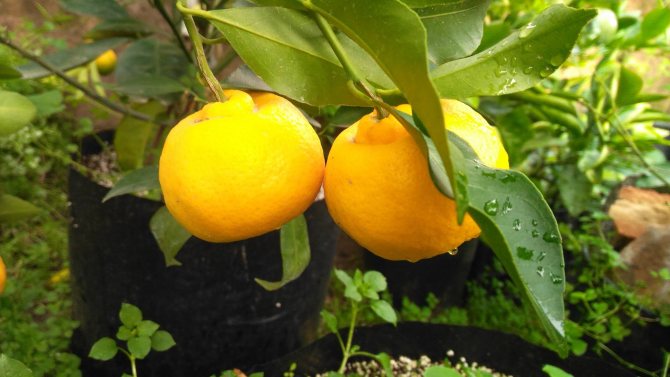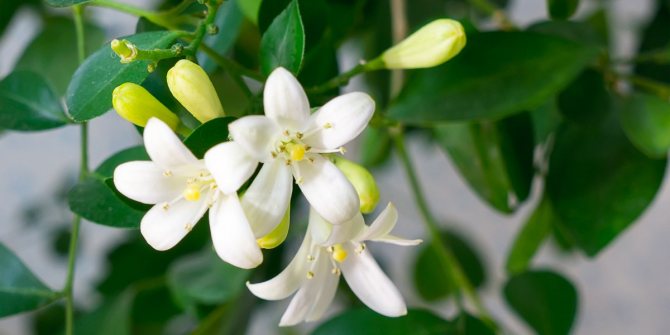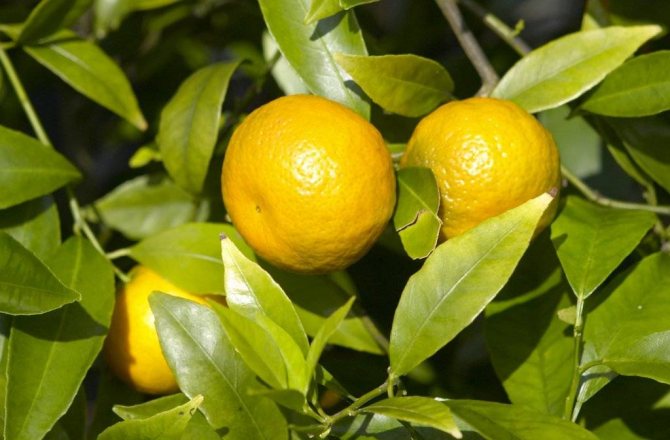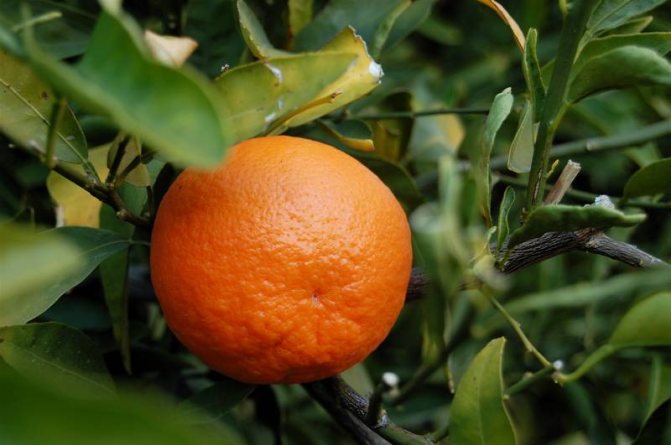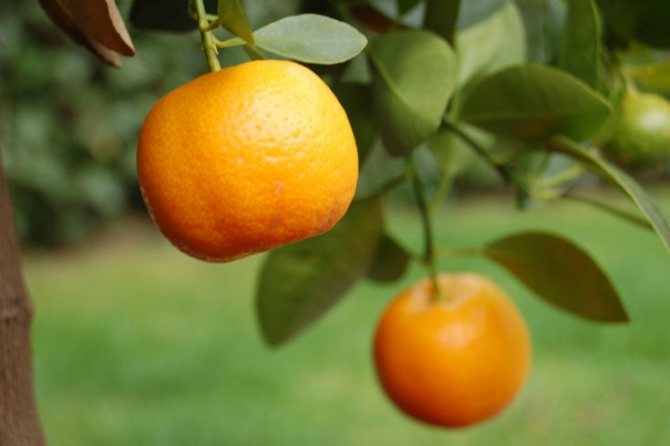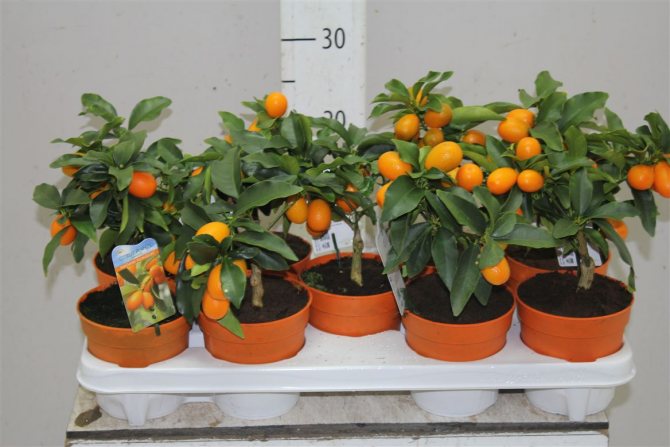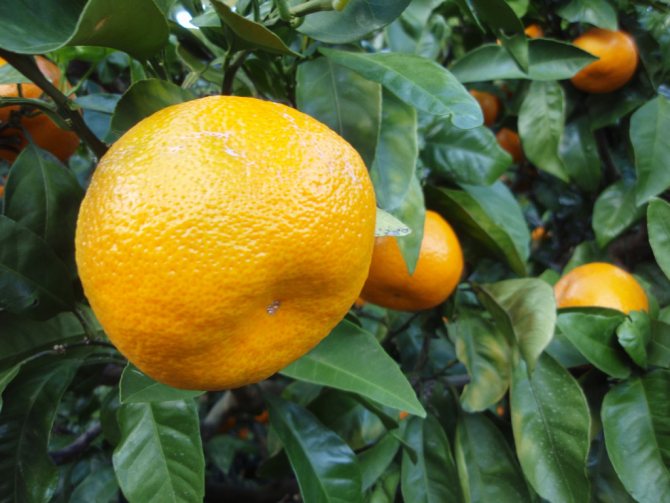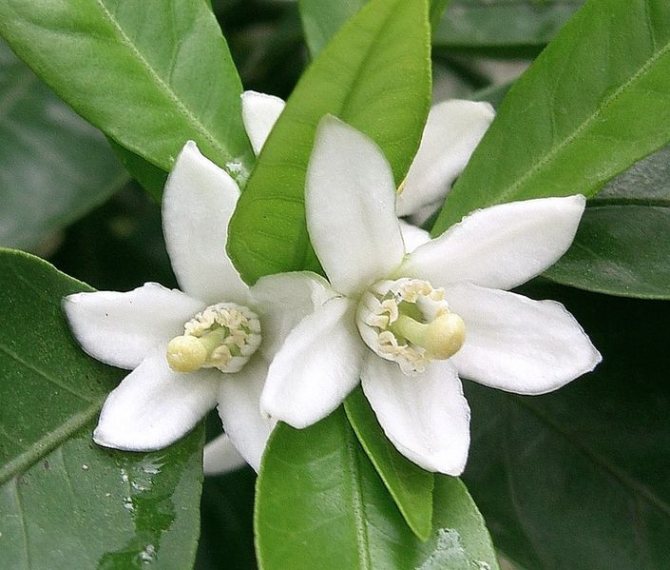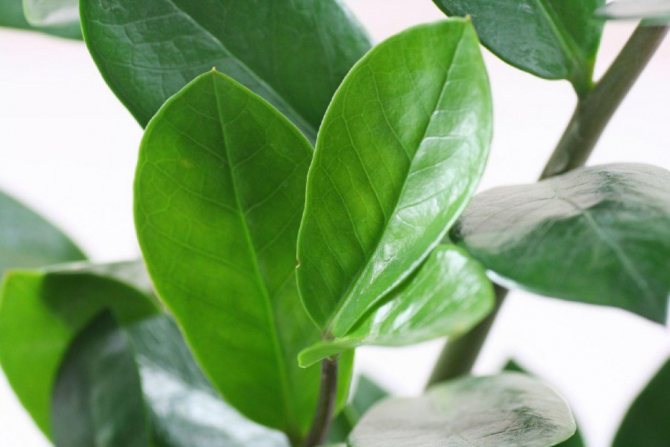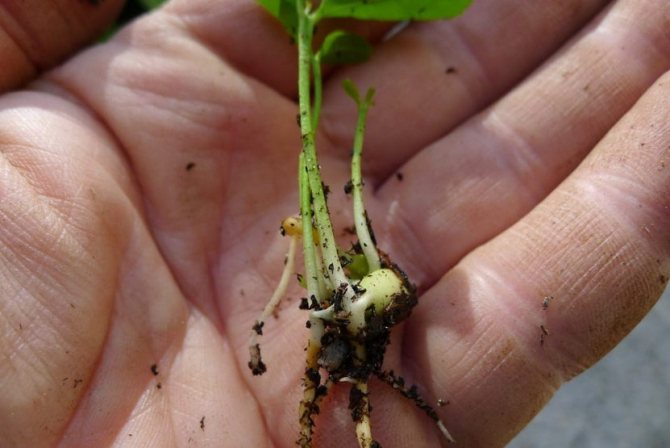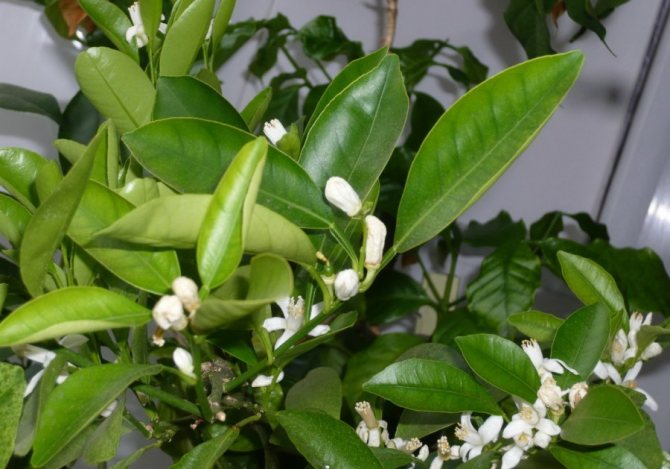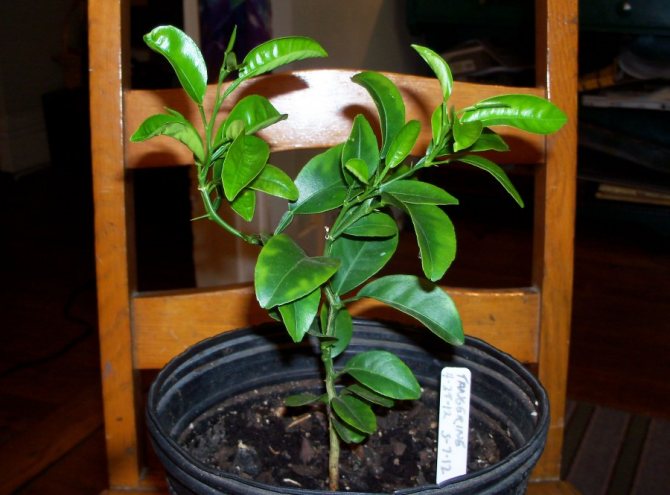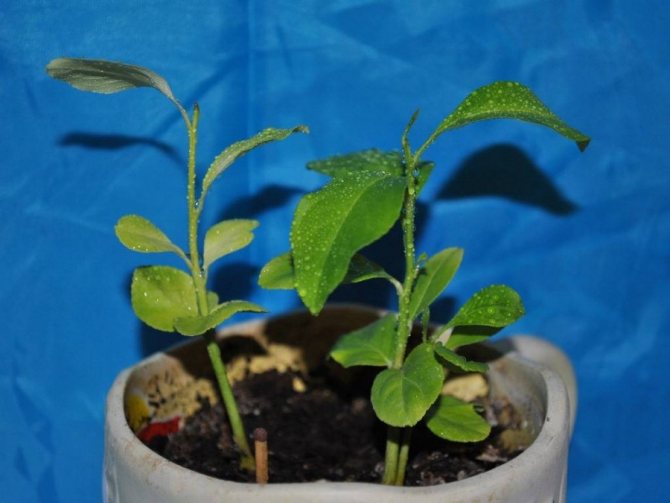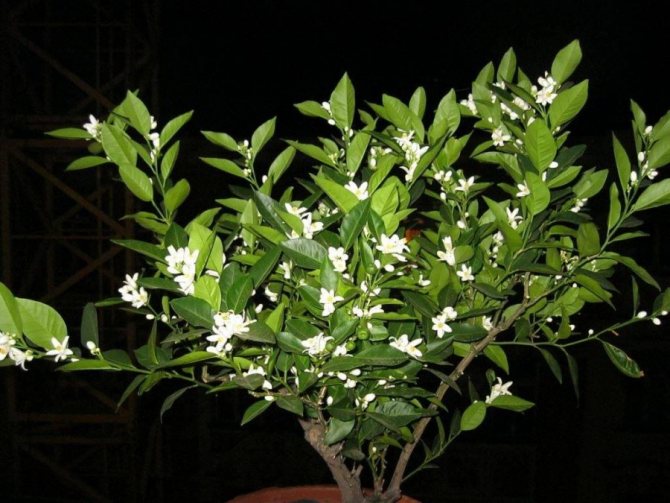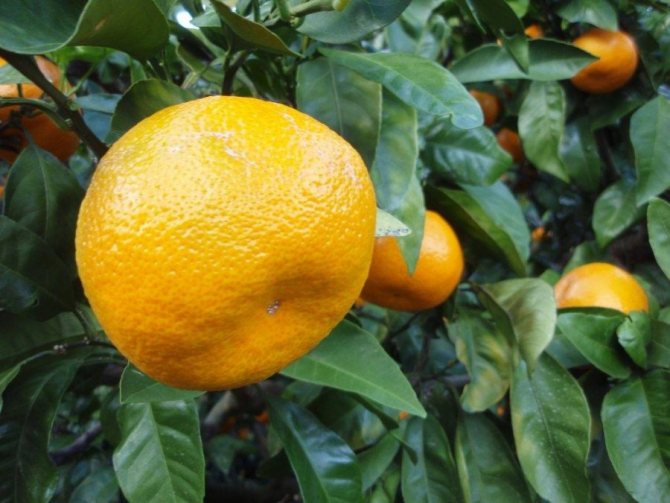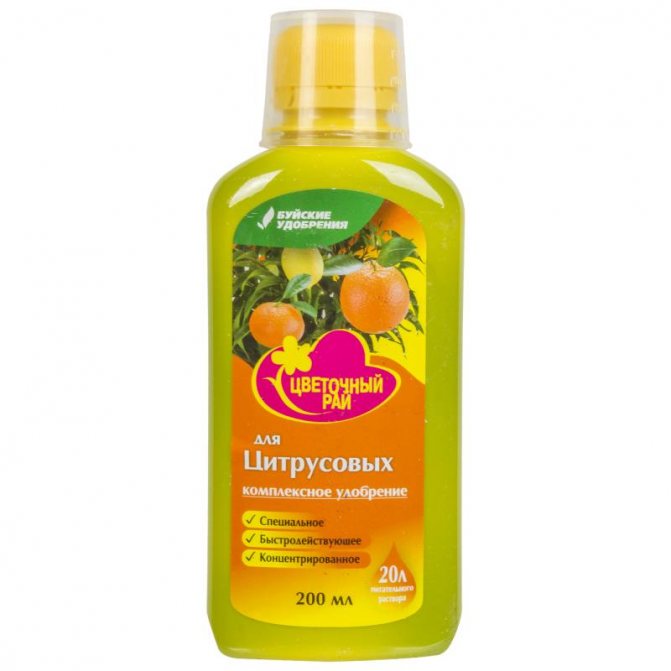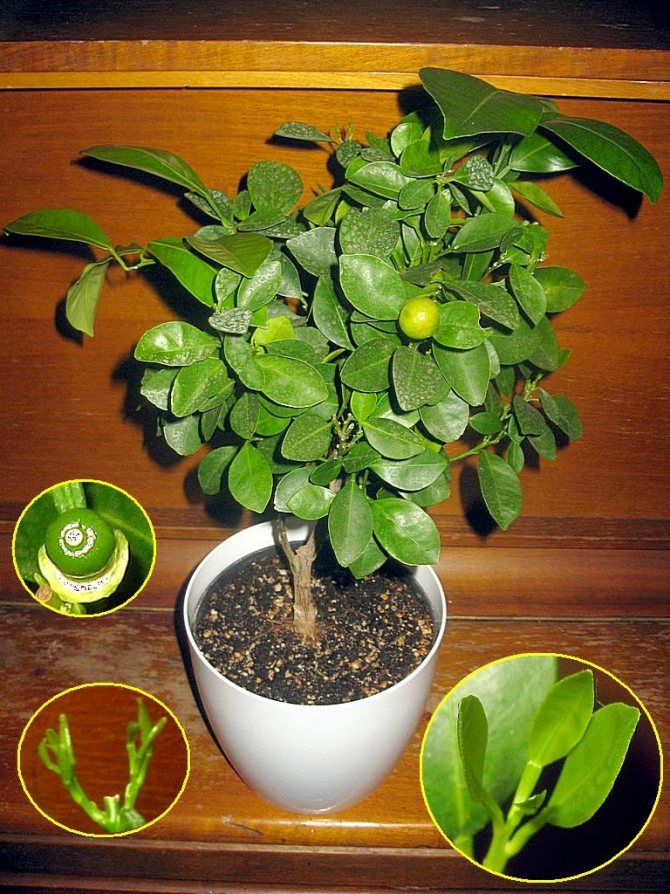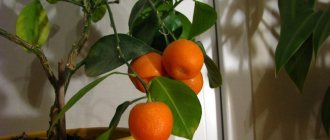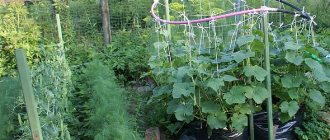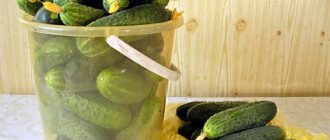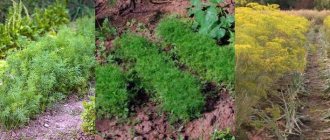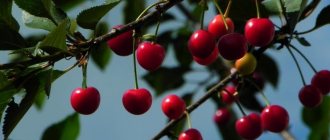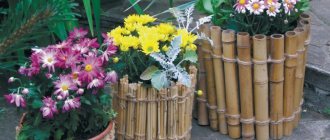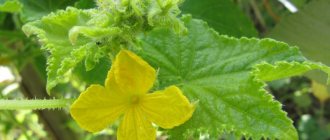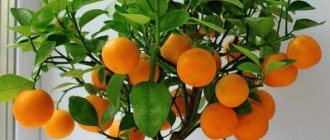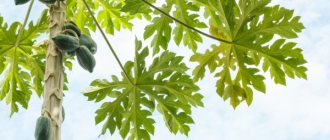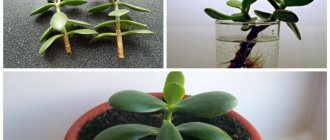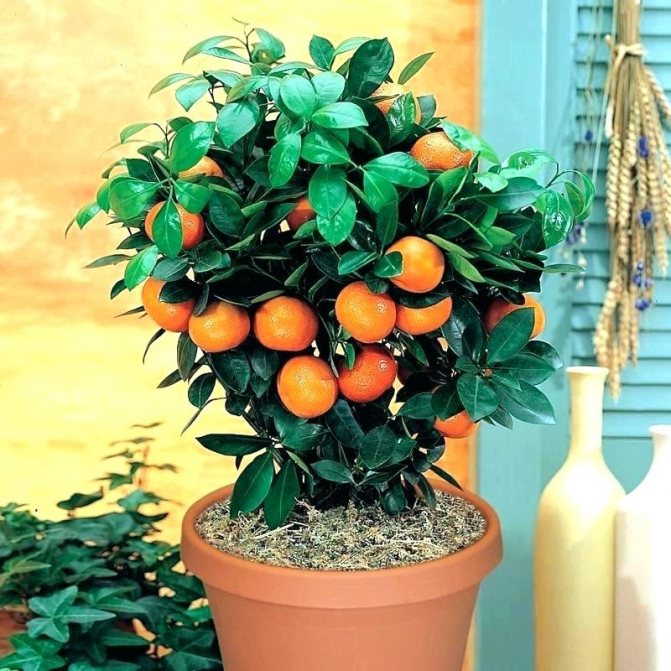
- 16 July, 2019
- Houseplants
- Lyudmila Storozhenko
Mandarin is associated with sun, exoticism and good mood. Its bright orange color gives a lot of positive emotions. Therefore, it is not surprising that many in our country grow a tangerine tree in a pot. However, in order for it to please with its appearance, as well as bright fruits, you need to take into account the basic rules for care and cultivation. The basic recommendations of professionals will be discussed below.
Variety
The indoor tangerine tree is an original, showy plant. Even in the harsh winters of the domestic climate, it will be possible to preserve a piece of summer in your own room, when amazing fruits and snow-white flowers appear on the branches.
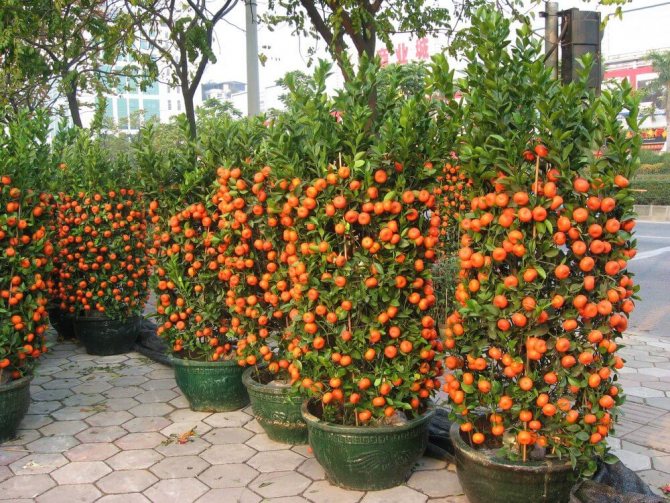

It is a plant of the Rutaceae family. At home, a tangerine tree usually lives no more than 20 years. Under natural conditions, it grows up to 4 m in height. But dwarf varieties are grown at home. There are several of the most popular options that are often chosen by flower growers in Russia. These include:
- Forged-Vasya. This is a fruiting mandarin that reaches a height of 1 m. Its branches are covered with small, dense leaves. The fruits are 6 cm in diameter. Its branches are rather large. The first crop with good care is harvested after 2 years. It is possible to collect up to a hundred tangerines from one bush.
- Willow. A small tree that has elongated leaves. During the flowering period, the tree looks very impressive. Inflorescences reach 4 cm in diameter. Fruits can be up to 7 cm in diameter.
- Clementine. A hybrid variety with small fruits. They contain a lot of seeds. This plant bears fruit in the second year.
- Unshiu. A dwarf mandarin that has thin branches and wavy leaves. There are no seeds in the fruit. Their shape resembles a pear. At home, such a tree can be grown exclusively with the help of a cutting.
- Honey. This is a small bush. It is covered with small but sweet fruits. They taste like honey (hence the name).
- Shiva Mikan. A small tree whose branches are covered with large leaves. Small fruits ripen around October.
- Sochi. This tangerine has rather large fruits. They weigh about 80 g. They have a thin peel that is easy to peel off. Fruits ripen in early November.
- Calamondin. Differs in the presence of green fruits. They mature in a greenhouse or at home. The fruits, although they look unusual, are tasty and very sweet.
You can plant several varieties at once to choose the best option. It will be possible to breed it further.
Mandarin - description, characteristics, photo. How do tangerines grow?
Mandarin is an evergreen tree, reaching a height of 4 meters, although the height of a 30-year-old tree can reach up to 5 m, and the harvest can be from 5 to 7 thousand fruits.
The mandarin has a rather spreading, rounded crown, the diameter of which can exceed 3.5 meters. The bark of the tangerine tree is light gray and the young shoots are dark green. Mandarin leaves are small, leathery, pointed or ovoid, and do not change color during the season. Each leaf lives for about 4 years.
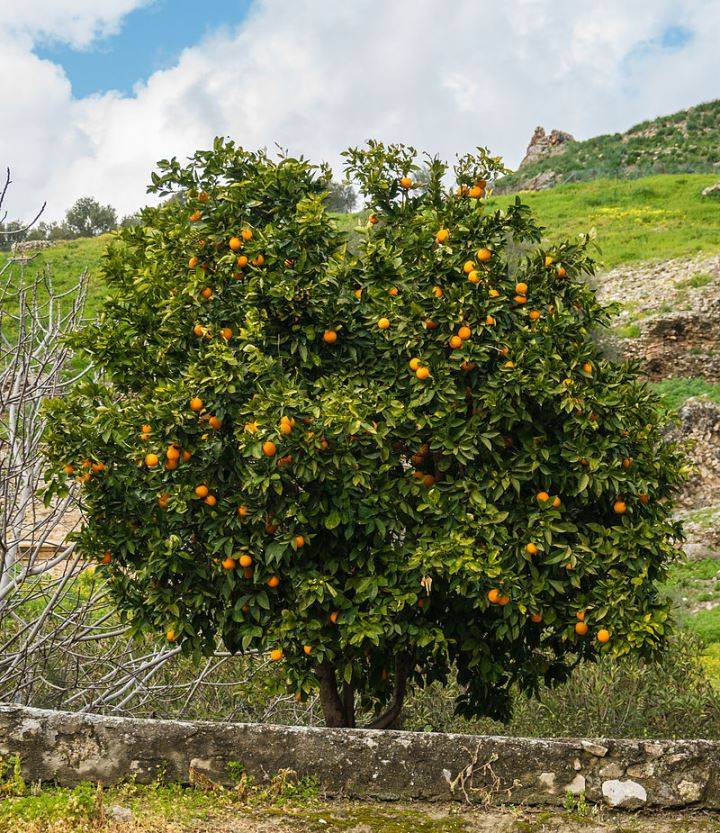

Photo Credit: Jebulon
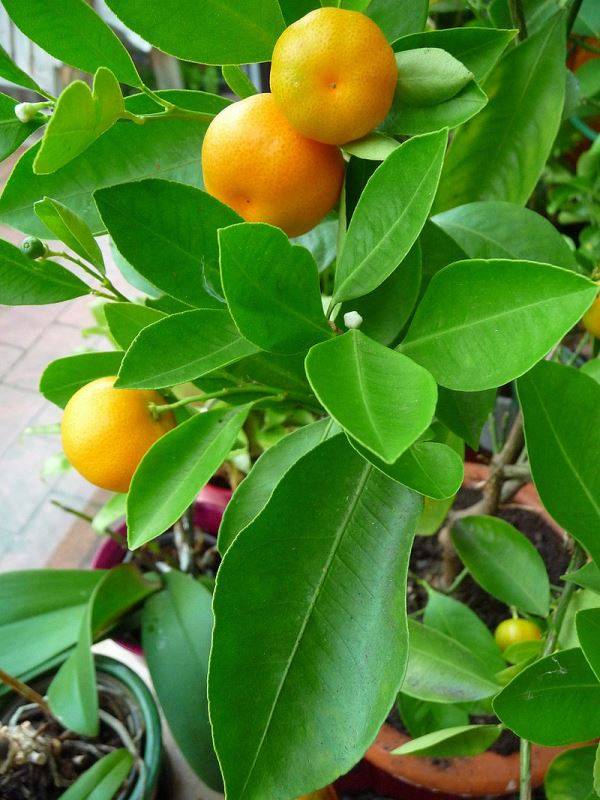

Photo by: 4028mdk09
Mandarin flowers are often single or collected in pairs and are located in the axils of the leaves.
The tree blooms from April to early summer, then the tree looks especially beautiful: the mandarin crown is as if wrapped in a cloud of white or cream inflorescences, emitting a bright, pleasant aroma, somewhat similar to the smell of bergamot.
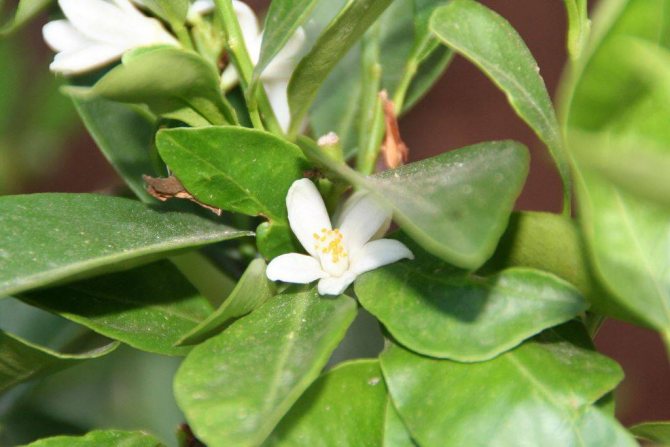

Photo by: Sgpl
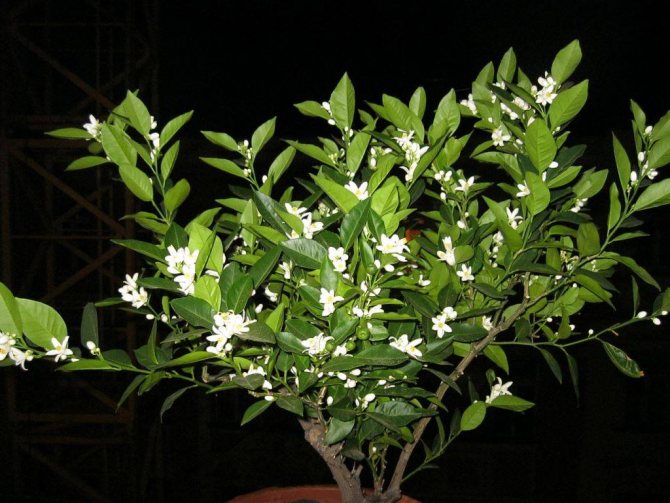

Photo Credit: Hubertl
Mandarins are self-fertile plants and are pollinated with their own pollen, as a result of which many ovaries are formed, and fruits begin to develop. Mandarin is a fairly early-growing tree, and gives the first harvest 3-4 years after planting. The first growth of shoots occurs at the beginning of spring, the second growth wave begins in mid-August.
Fruit formation occurs on the second last year's growth or on the first this year. Mandarins ripen in October and are harvested completely in December. Thus, tangerines grow and bear fruit within 7 months.
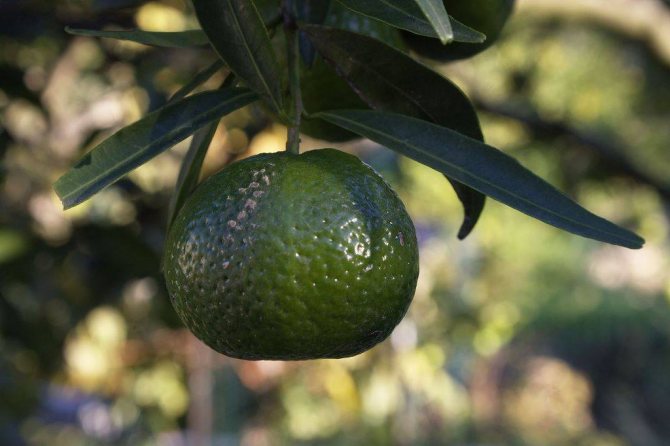

Photo Credit: Marco Bernardini
Mandarin differs from other citrus fruits in its thin, easily detachable orange peel, and in a number of varieties, the skin and pulp are separated by an air layer and practically do not touch each other.
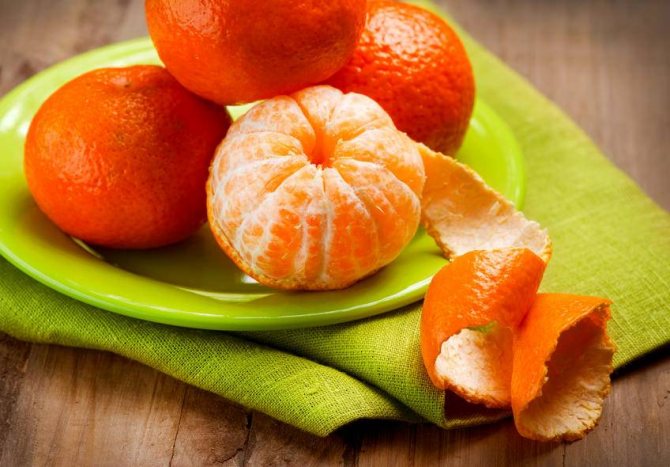

The size of mandarin fruits ranges from 4 to 6 cm in diameter, and due to the flattened shape, the width of the fruit is noticeably greater than its height. Each mandarin fruit consists of several nests - lobules, usually 10-12, each of which contains 1-2 seeds.
Some varieties of tangerines are completely seedless.
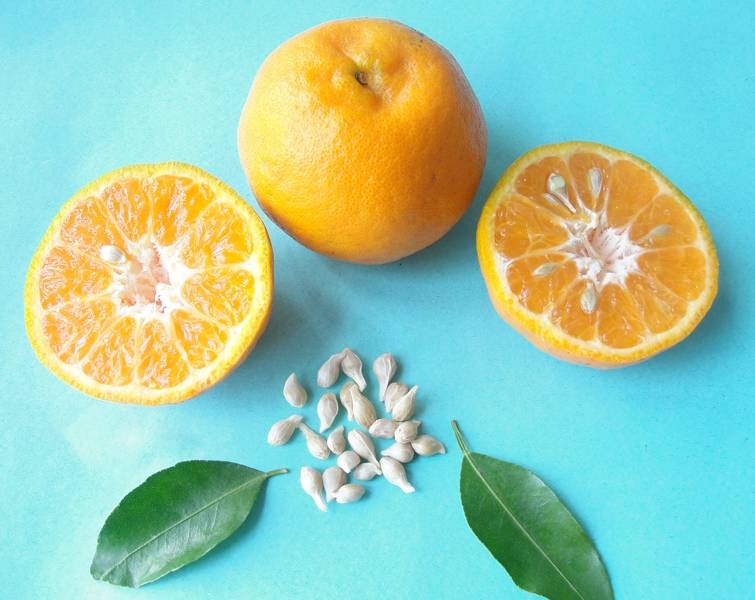

Photo Credit: Blanco
The structure of the yellow-orange pulp of mandarin is similar to many citrus fruits (orange, lemon, orange) and is represented by numerous juice-containing sacs - fusiform hairs filled with juice.
Such a structure is called hesperidium - one of the forms of a berry-like fruit.
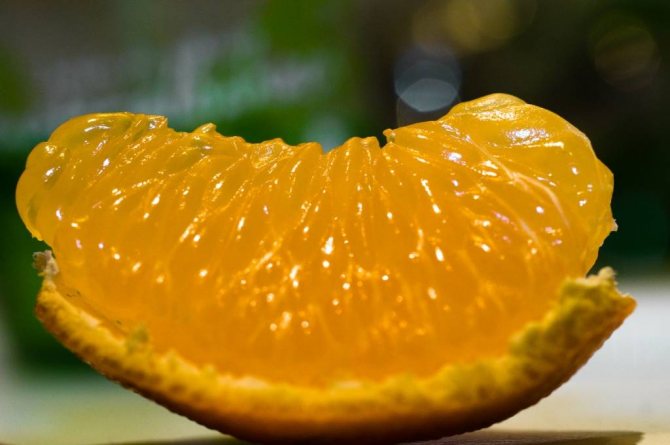

About 600-800 fruits are obtained from one plant per year; with age, fruiting becomes more abundant.
On average, a tangerine tree lives for about 70 years.
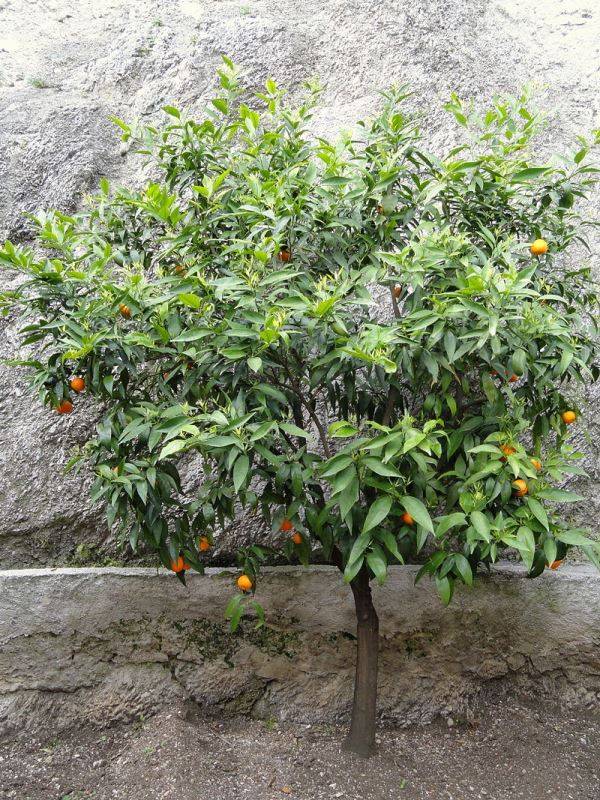

Photo by: Daderot
What do you need to consider?
How to grow a tangerine with fruits at home? It is worth noting that there are two ways to get a beautiful plant at home. You can grow it from a seed or a seedling. The first option does not allow preserving the varietal properties of the plant. Therefore, it is rather just a decorative flower that will decorate the room with its exotic look.
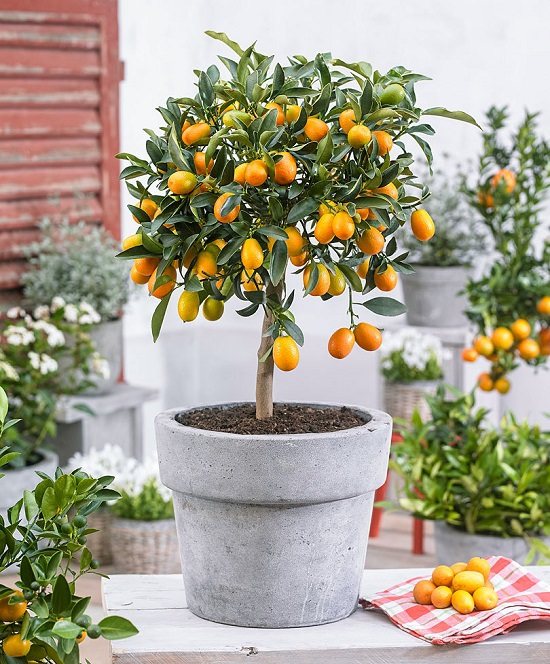

In order for a tree grown from a stone to bear fruit, it must be grafted. The first harvest during the cultivation of a tangerine tree from the seed can be harvested in 3-4 years at best. The advantage of this method is cost savings. The fact is that seedlings will cost at least 100 rubles. per piece and more. Therefore, it is much cheaper to grow a tree from a stone.
You can use an alternative technique. She assumes to apply layers. In this case, varietal characteristics are preserved, and the cost of cultivation will be minimal.
It is important to choose the right soil for a tangerine tree in a pot. At the same time, it is taken into account whether this is a young or already an adult plant. In order for a young tree to feel good, and also bear fruit normally, you need to purchase either special soil for such plants, or prepare it yourself. You will need to mix one part of soil, humus, quartz sand and two parts of turf. In such conditions, the mandarin feels quite well.
Sawdust can be used in the process of sprouting seedlings from the seed. At the same time, you need to maintain a sufficient level of humidity. This is a rather lengthy process that requires patience from the grower.
When the tree becomes adult, it will need a different soil composition. It should include one part of humus, leafy soil and sand, as well as three parts of turf. Also, you need to add a little oily clay to this composition.In such a soil, an adult tree quickly takes root. This speeds up the time it takes for the tree to bear fruit after transplanting.
Mandarins - benefits and harms
Beneficial features
Due to its rich chemical composition, mandarin is considered a very healthy fruit. Mandarins have long and firmly established themselves as the main source of vitamins necessary for the body in the cold season. The juicy pulp of mandarin contains the following substances:
- vitamins of group B, A, C, E, rutin;
- organic acids (including citric and folic) and sugars;
- minerals such as calcium, iron, magnesium, manganese, phosphorus, potassium, zinc.
- phytoncides with antifungal and bactericidal properties.
Tangerine pulp and juice improve appetite, and due to its low calorie content, fruits can be consumed without fear for your figure.
The peel of tangerines contains 1-2% tangerine essential oil, as well as biological pigments, including carotene. These substances stimulate the activity of the digestive tract, contributing to better digestion of food. Also, the peel contains glycosides that have a beneficial effect on the state of blood vessels.
A decoction of dried mandarin peel calms the nervous system, and also has expectorant properties and helps with lung diseases (bronchitis, tracheitis). Rubbing the tangerine pulp into the affected skin and nails will help get rid of the fungus.
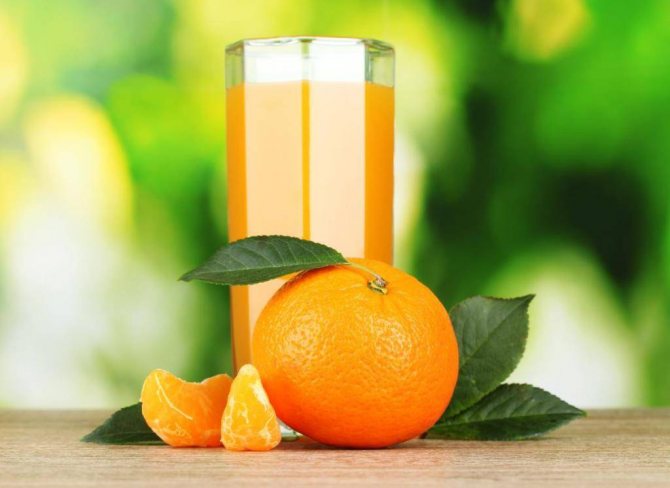

Mandarin seeds have also found their use in medicine:
- Potassium and sodium, which are found in mandarin seeds, strengthen the cardiovascular system.
- Vitamins of group B and C prevent the development of heart attacks and strokes.
- Vitamin A takes part in the formation of collagen and prevents the development of skin diseases.
- Mandarin seeds are rich in polyphenols, the main function of which is to suppress the development of cancer.
Contraindications
Be careful! People suffering from chronic diseases of the stomach and kidneys should use tangerines with extreme caution. It is not recommended to use tangerines for the following diseases:
- Peptic ulcer and duodenal ulcer;
- Acidic gastritis;
- Enteritis;
- Colitis;
- Cholecystitis;
- Hepatitis;
- Sharp jade;
- Diabetes;
- Allergy to citrus fruits.
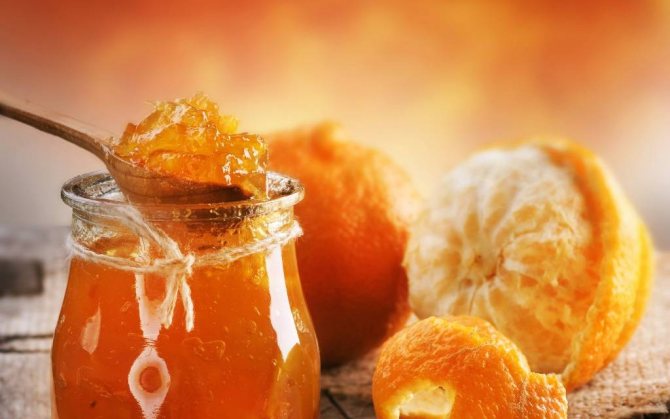

Bone tangerine
Many growers decide to grow a tangerine tree from a seed. This is a fairly straightforward process. It is enough just to buy a fruit in winter and collect seeds from it. The best time to do this is in December. At this time, the tangerines are still fresh. This makes it more likely that the seed will germinate.
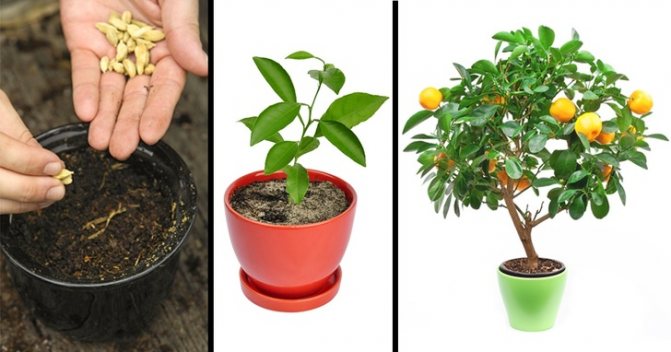

After the bones are removed from the pulp, they must be thoroughly rinsed under running water and laid out on a saucer. They are covered with a damp cloth. Then the seeds need to be left for a while in a warm place. This will facilitate their germination. The fabric covering the seeds must be constantly moistened. It must not be allowed to dry out.
You can use a hydrogel instead of a napkin. It does not dry out, which increases the effectiveness of the procedure.
How to plant a tangerine seed at home? It is necessary to prepare an appropriate substrate for this. Its composition was presented above. It is easier to purchase primer in a specialized store. We need a special composition for citrus fruits.
It is important to make sure that the soil is not acidic. In such conditions, a tangerine tree will not be able to grow. Therefore, never add peat to your substrate.
Next, you need to prepare a flower pot. It should have a volume of 4 liters. Prepared earth is poured into it. Previously, a drainage layer is laid out on the bottom. It should be expanded clay and coarse sand. When the earth is prepared, a grain is deepened into it. It must first germinate. The seeds are buried 3-4 cm into the soil. The land needs to be well watered.
The pot is left in a room, the temperature of which should be around 21 ° C.The first shoots will appear in 15-20 days. It is best to plant several seeds at once in one flower pot. This increases the chances of success. When the plants are tall enough, they are transplanted into separate containers. When using this technique, the harvest must be waited for several years. A transplant is carried out every year.
Mandarin diseases, description and photo
Mandarin, like other plants, is susceptible to disease and pest attacks. This is especially true for plants grown in an apartment or greenhouses. Excessively dry or, on the contrary, excessively humid indoor air, as well as an imbalance of important trace elements in the soil, often provokes various diseases of mandarin:
- Anthracnose - a fungal disease that affects all parts of the plant: branches, flowers, leaves, fruits. Mandarin buds and leaves turn yellow and fall off over time, the bark of the branches is deformed, leading to their death, reddish spots appear on the skin of the fruit, which later begin to rot. As a fight against the disease, treatment with the biofungicide "Fitosporin" is used, and the diseased parts of the plant should be removed and destroyed.
- Hommosis of citrus fruits. The disease manifests itself in the appearance of rust-red spots on the trunk and branches of a tangerine tree. In these places, the bark begins to crack and gradually die off, gum oozes from the cracks. The causes of mandarin disease can be the excessive deepening of the seedling into the ground, its mechanical damage, lack of drainage, an excess of nitrogen or a lack of phosphorus-potassium fertilizers. When gommosis develops, the cracks are carefully cleaned of gum, treated with copper sulfate (30 grams per liter of water with the addition of 200 grams of slaked lime to the solution), then the wounds are covered with garden varnish.
- Wart (scab). A fungal disease that very quickly affects the leaves, fruits and delicate shoots of the tangerine tree. Small, translucent spots form on parts of the plant, which eventually turn into raised gray-pink warts. The ovaries dry out and fall off, the mandarin fruits become covered with brown spots, the tangerine peel becomes bumpy and turns into an unaesthetic brownish tint. As a fight against fungal disease, three times spraying of tangerine trees with Bordeaux liquid (1% solution) is used.
- Spider mite on tangerine. It mainly affects mandarin leaves, feeding on the juices of the leaf blade, enveloping it with cobwebs and causing the leaves to curl, wilting and further drying. To combat the pest, a contrast shower is used, watering the leaves first with cold water, then with water at a temperature of about + 40 degrees, alternately, several times. At the same time, mechanical removal of pests is carried out using a toothbrush, and the entire surface of the earth around the tangerine tree is densely sprinkled with ash. After 10-12 days, the procedure is repeated. In especially advanced cases, the plant is treated with the preparations "Fitoferm" or "Actellik".
- Scabbard on tangerine. This parasite affects tangerine most often in the cold season. The pest takes a liking to the lower part of the leaf blade of the plant and its branches. The first symptom of the ailment is a sticky, syrupy discharge on a tangerine tree. At the initial stage of tangerine infection with a scabbard, these smudges should be removed with a swab dipped in a decoction of garlic or onions (200 g of crushed raw material, pour water over and leave for 2 days). Against the scabbard, you can use a soap solution (2 tablespoons of any liquid soap or ordinary dishwashing detergent for 3 liters of water), which covers the leaves for 30 minutes, and then rinses off. In case of serious damage, the plant should be sprayed with "Fitoferm" or "Aktellik".
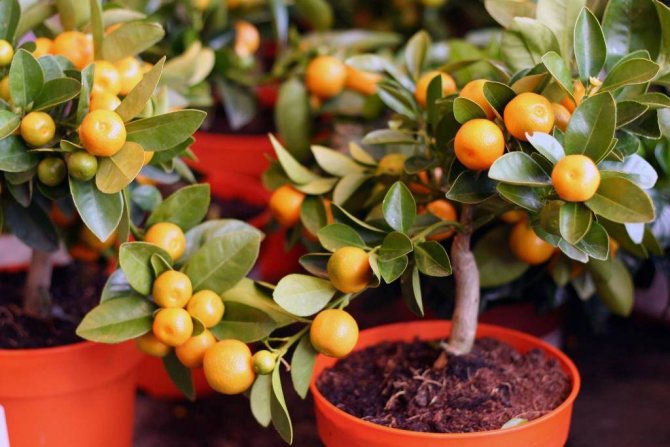

Saplings
You can grow a tangerine tree in a pot of cuttings. They are bought in specialized stores. They can also be ordered online.The second option is less preferable. It is important to visually assess the condition of the cutting before buying. It costs quite a lot. Therefore, you need to choose a really strong, hardy plant. There should be no defects on it. If the stalk has stains, mold, it is worth setting it aside.
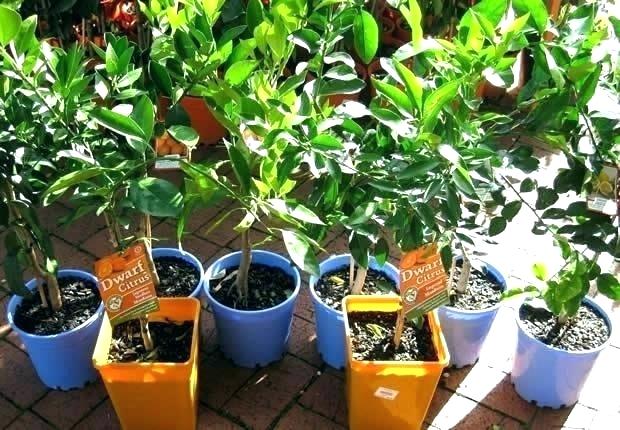

Get a seedling that has several leaves. There should be a clod of earth at the roots. In this case, the probability of successfully growing the tree will be higher.
If you have an adult plant, you can cut the cuttings from it yourself. To do this, you need to cut off several shoots with a sharp knife. They are placed in the water. This is where they take root. The water needs to be changed so that harmful bacteria do not accumulate in it. After a month, you can transplant the sprouted stalk into the ground.
To do this, you need to prepare a pot with a volume of about 5 liters. The sprouted cutting is deepened into the substrate. The first crop can be harvested in a year or two.
Some find it easier to buy an already mature tangerine tree. In this case, you will not need to grow it yourself. For inexperienced growers, this is one of the best options. You need to properly care for this exotic plant.
Interesting facts about tangerine
- According to historians, the first mandarins came to Europe thanks to Alexander the Great, who in 325 BC. e. brought this exotic fruit from India for his teacher and mentor - Aristotle. For some unknown reason, the tangerine was not appreciated at its true worth and was only referred to in the annals as the “golden apple”. Mandarins gained popularity only at the beginning of the 19th century.
- Approximately 95% of the tangerine trees grown in the CIS are the Unsu varietal group, whose representatives are distinguished by increased frost resistance.
Did you like the article?
Layers
The tangerine tree in a pot can be grown by layering. This is the best option for those who want to preserve the specific characteristics of the plant and do not want to spend money on the purchase of cuttings. This is a simple method that has a great chance of success.
You need to choose an escape that is over a year old. Its length should be at least 20 cm. It should have a thickness of about 5 mm. With the help of a sharp knife, 2 circular cuts are made on its bark. Then it is removed, which will make the roots grow in this place. Leaves at a distance of 5 cm from the created cut must be removed.
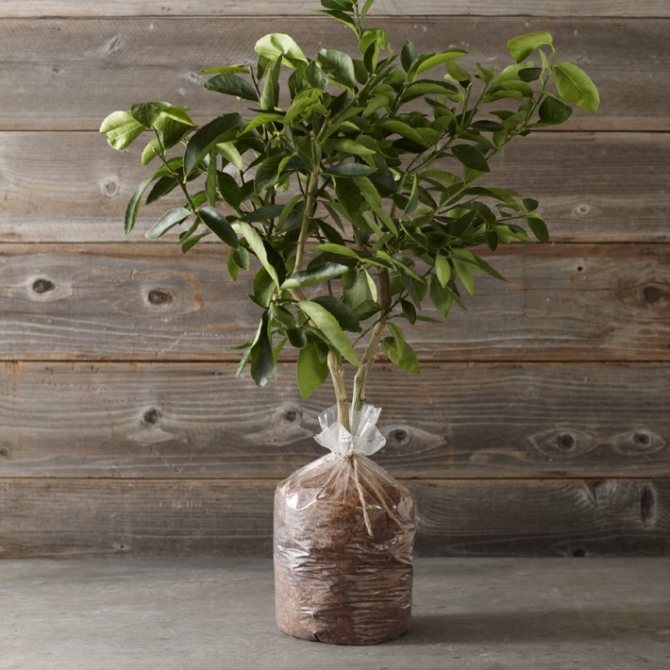

Pinch the top. Next, you need to cut the plastic bottle in half. You need to put a branch in it. The place where the bark was removed should be in the center. A layer of sand should be poured at the bottom of the bottle. On top, create a layer of nutrient soil (composition as for tangerine seeds).
In a month, roots will appear on the branch. It is necessary to water the layers all the time. Twice a month, you will need to fertilize the substrate with mineral compounds. When the shoot can take root, it is transplanted into a flowerpot with a diameter of about 20 cm. This is an easy way to breed a tangerine tree.
When to transplant tangerine
Phytotechnologists recommend annual transplanting of young seedlings before the age of 5 years. Older specimens are transplanted only when necessary: if the roots become cramped.
The transplant rules are simple:
- The volume of the new planting container should be 5-6 cm larger than the old one.
- Check for the presence of all the necessary components in the substrate.
- The larger the pot, the higher the drainage layer at the bottom of the tub. If for a small and medium sprout there is a sufficient layer 1-2 cm thick, then an adult plant needs a layer of 5-8 cm.
- It is categorically impossible to carry out a transplant during flowering and during a dormant period. The best time for replanting is early spring.
- Fertilization should be stopped 3 days before and within a week after transplanting.
Graft
To grow a tangerine tree in a pot, you need to consider several features of this process. If you have used the seeds of this plant, it will not bear fruit.Or the tangerines will be sour. To fix this, you need to graft the tree. This procedure is carried out no earlier than he turns 2 years old. The barrel will have a thickness of about 6 mm during this period.
The inoculation can be done in the cleft or under the bark. Budding is also used. In the process, you will need a sharp, clean knife, scotch tape, garden var. Wash your hands thoroughly before carrying out the procedure. All actions are performed quickly so that the sections are in contact with air for a minimum amount of time.
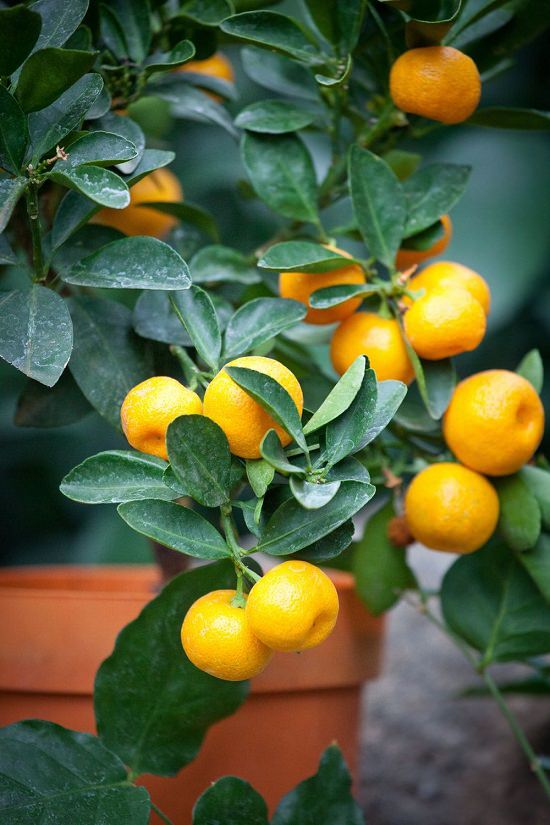

Split grafting is carried out on mature trees that are already 3 years old. Cuttings should have 2 to 4 buds. They are cut obliquely on both sides. The trunk must be cut, creating a cleft 5 cm deep. The cambium of the cutting must on one side come into contact with the cambium of the scion when it is set in the cleft. The barrel is wrapped with electrical tape and covered with an antiseptic compound. The tree should grow in a greenhouse until the cutting takes root.
To graft a stalk under the bark, a florist must have certain skills. This method is more complicated. You need to make an incision in the bark 3 cm long. It is carefully separated from the trunk. An obliquely cut stalk is inserted between the bark and the wood. It is tied with electrical tape. Multiple cuttings can be used. In this case, they are located at a distance of 2 cm from each other. The tree is in greenhouse conditions. Mineral fertilizers are applied to the soil.
Mandarin planting technology
In places where the absolute minimum of winter temperatures is -8 ° C, only tangerines can grow, since they are the most cold-resistant crop among citrus fruits. The soil for laying a tangerine plantation should begin to be prepared in 12-24 months. To do this, planting is carried out to a depth of at least 50 cm, and legumes, soil-strengthening herbs are sown. Before the start of soil cultivation, manure is applied, with the calculation of 40 tons per 1 hectare. Saplings are preferred to be planted in spring. Mandarins can be propagated from seeds, cuttings, cuttings and grafts.
1. To germinate seedlings from seeds, you need to take ripe fruits, remove the seeds from them, dry them a little at room temperature, then place them in a moist substrate. After a couple of months, sprouts will begin to show, and at this time it is important to keep them indoors where the air temperature is not lower than + 15 ° C. In order for such seedlings to be planted in open ground, it will take about a year for them to grow up, to develop the root system sufficiently.
2. When propagating by grafting, as a stock, you can use not only a tangerine tree, but also other trees of citrus crops.
3. Reproduction by air layering is no less laborious - for this you need to take young shoots, tilt them slightly, giving them a horizontal position, carefully cut off the bark and wrap this place with wet moss, periodically moistening it in order to avoid drying out. Over time, the cuttings will begin to take root, after which they can be cut and transplanted into fertile soil for rooting.
4. Propagation by cuttings is a bit like the method of air layers. Only for this, the shoots are first cut off, and then placed in a nutrient medium.
The most reliable and less laborious way to propagate tangerines is to grow from seeds. You can protect yourself from these worries and purchase ready-made seedlings in the nursery. But since this plant at such a tender age is rather fragile and capricious, and the suppliers do not always honestly admit what state these seedlings are in, it is possible that half of the acquired planting material will have to be thrown away. Young seedlings can be planted in open ground when they have reached a height of 10-15 cm. And, in no case, in cold soil. A small dose of organic matter or mineral fertilizers mixed with the soil should be placed in the planting holes. After planting, the tangerines are watered and mulched.
Budding
If you have a single-bud stalk, budding can be done.First, wipe the barrel with a damp sponge. It is necessary to process an area at a height of 10 cm. A bud with a small piece of wood is separated from the cutting. An incision is made in the bark in the form of the letter "T". It should be 2.5 cm high and 1 cm wide. It should be carefully expanded. A kidney is inserted here. It is covered with bark.
The incision site is wrapped with tape, treated with an antiseptic. The kidney remains free. The tree is left in the greenhouse. The kidney is covered with a plastic bottle. You can use plastic wrap. It is necessary to ventilate the greenhouse so that moisture does not stagnate inside. When the stalk takes root, starts up the first shoots, the trunk must be cut off by a third at a distance of 7 cm from the scion.
Miagawa-Wase
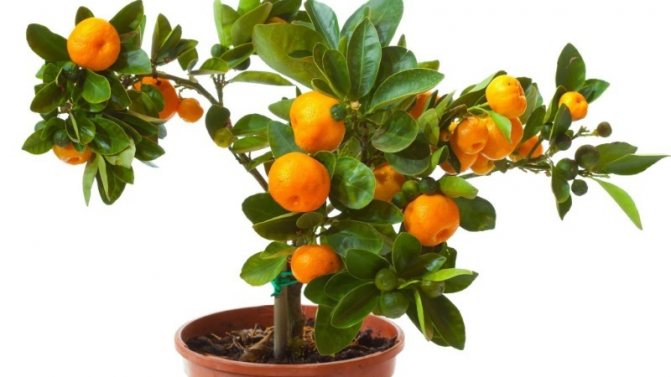

Of all the dwarf trees, it is considered one of the tallest. It is characterized by high productivity. The fruits grow large, seedless, the skin is smooth and thin.
The pulp is juicy, sweet. The variety is considered early, so the fruits are ready for harvest in September. One of the distinctive features of the variety is the long-term storage of the tangerine.
Care rules
There are several guidelines on how to care for a tangerine tree. In summer, the ambient temperature should be approximately 23 ° C. During the day, the plant must be taken out into the air. If it's warm at night, you don't have to bring it home. The flowering period begins in the spring. During this period, the temperature can be at the level of 19 ° C. Oscillation of one degree in both directions is allowed. Otherwise, the flowers will fall off, and the fruits will not be tied.
How to care for a tangerine tree in winter? It is necessary to provide the plant with rest. It should be kept in a cool room (for example, on a glazed loggia) at a temperature of 5-10 ° C. A sharp temperature drop and drafts are unacceptable.
The tree loves light. You can leave it in the sun, the direct rays of which will not harm the plant. Due to the lack of light, growth may slow down, and the leaves are crushed. Additional lighting is required in winter. For this, a phyto-lamp is used.
How to water a tangerine tree in a pot? The plant needs frequent irrigation. You can do this work several times a day if the weather is hot outside the window. In winter, watering is carried out 3 times a week. The earth ball should not be too wet. However, the tree also does not tolerate drought. Due to lack of liquid, it can shed leaves.
It is also worth noting that the water should be at room temperature and settled. If you apply cold liquid, it will negatively affect the appearance of the plant.
It is necessary to spray moisture with a spray bottle at a distance of 10 cm from the plant. If the tree is in bloom, this procedure is done very carefully. The liquid should not come into contact with the flowers.
It is also required to make top dressing. Without them, the tangerine tree cannot be healthy. We need complex mineral fertilizers that are diluted in water. This process begins in March. This should be done twice a month. During the flowering period, their number should be increased.
Indoor tangerine at home: care, reproduction, varieties
Mandarin - an evergreen plant that belongs to the Rutov family. The specific Latin name for mandarin is Citrus reticulate. Like orange, lemon, lime, grapefruit, it belongs to the genus Citrus. The life form of this plant is interesting - it can be a shrub and a tree, reaching a height of 5 meters.
0:563 0:573
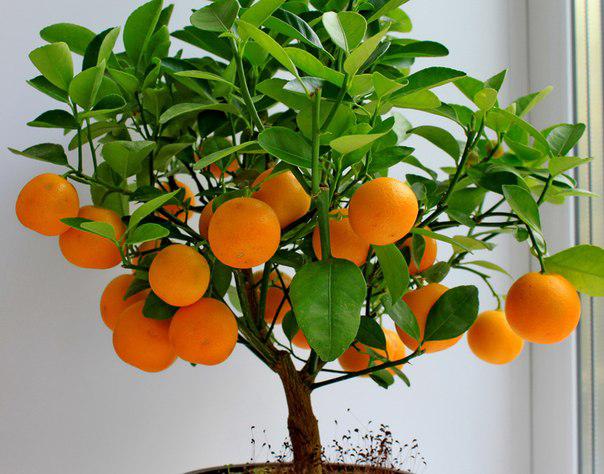

1:1089
Indoor tangerine at home: care, reproduction, varieties
1:1211
Indoor tangerine Like other representatives of the genus Citrus, mandarin has long been grown in greenhouses, greenhouses, and winter gardens. Despite its size, tangerines at home can be grown on a balcony or on a windowsill. Currently, breeders have bred many varieties of dwarf and undersized tangerines for home cultivation, the maximum height of which is 0.6-1.1 m.Indoor tangerine may not belong to dwarf varieties, then the plant needs to be heavily pruned and shaped.
1:2121
Indoor tangerine very showy pot plant... And not only because of the bright, aromatic and mouth-watering orange fruits that can last for several months. Sometimes the plant delights only in its flowering, because the delicate white mandarin flowers exude an amazing aroma. In some varieties, flowering begins in spring and can last all year round. Indoor tangerinegrown as a bonsai is a real work of art.
1:882
Indoor tangerine fruits tied without artificial pollination, usually ripen at the end of the year. Often, a potted indoor tangerine is bought in a store with fruits already hanging on it. Despite the fact that they are very appetizing, they are not worth eating. Indeed, to achieve such a high decorative effect, plants receive high doses of fertilizers. The tangerine has beautiful leathery and corrugated leaves.
1:1619
Popular tangerine varieties for growing at home Unshiu is a Japanese variety, the most unpretentious, begins to bear fruit for 3-4 years, grows up to 0.8-1.5 m in room conditions. Branches well. Blooms profusely in spring, forms fruits in late October-November. Pear-shaped fruits lack seeds. Kovano-Vasa, Miha-Vasa, Miyagawa-Vasa - dwarf tangerines Vasya groups - suitable for growing on a windowsill, height 40-80 cm. Orange-yellow fruits ripen for the first time in the second year of cultivation, abundant flowering. Like all dwarf varieties, they do not need crown formation. Shiva Mikan is an early compact fast growing variety. Small fruits, no more than 30 g Murcott - The fruits of this compact tangerine variety are very sweet, ripen in summer, taste very sweet, therefore the name of the variety is translated as "honey". Clementine - a hybrid of mandarin and orange, bears fruit at home in the second year. One adult domestic tree per year produces up to 50 medium flattened orange-red fruits, very fragrant, with a shiny skin. Plants of this variety with numerous seeds are called montreal.
1:2050
Mandarin home care Lighting tangerine at home The first step in successfully growing an indoor tangerine is choosing a location for the plant and proper lighting. Indoor tangerines, like those grown outdoors, need good lighting with some direct sunlight. In low light, the plant slows down growth, throws out a small amount of flowers or does not bloom at all. With a severe lack of light, the leaves of indoor tangerine become faded, new shoots are elongated, thin and painful in appearance. Therefore, it is better to grow a plant in the eastern, southeastern and southern windows, shading from midday direct rays. In summer, the plant can be taken out onto the balcony, gradually accustoming it to the street. In winter, with a short daylight hours, the indoor tangerine should be exposed in the most illuminated place with direct sunlight. But sometimes this is not enough: artificial lighting is needed. For this purpose, an ordinary phyto-light bulb is suitable, which can be screwed into a chandelier or table lamp. It is necessary to transfer the plant to supplementary lighting gradually. With a sharp change in the length of daylight hours, it can shed its leaves.
1:2199
Content temperature The optimum temperature for indoor tangerine in the summer is + 20-25 ° C. During the period of budding and flowering, so that the flowers do not fall off, it is better to keep the plant at a temperature slightly below + 20 ° C. In winter, to ensure a relative dormant period, mandarin is kept at + 5 -10 ° C. A plant that is rested over the winter will bloom and bear fruit better.
1:675
How to water and spray tangerines at home The indoor mandarin, like its wild ancestors, is adapted to withstand dry periods.As a last resort, the plant will shed its leaves to reduce the amount of liquid that evaporates. A common problem when growing tangerines at home is over-watering, which leads to the development of fungal diseases. The amount of water for irrigation of indoor tangerine depends on several factors: - the size of the plant; - the size of the container in which the tangerine grows; - ambient temperature; - the duration of daylight hours and the intensity of illumination. The larger the leaf surface of the indoor mandarin, the stronger the evaporation, and the more it needs watering. The temperature also affects the rate of evaporation: the higher it is, the more the plant loses moisture. The length of daylight hours directly affects the amount of moisture that evaporates. Stomata - formations on the underside of terrestrial plants, which serve for gas exchange, open during daylight hours. Watering indoor tangerine should be carried out in the first half of the day, when the plant has activated life processes. When the temperature drops, watering is reduced, until it stops for several days during a period when the temperature in the room is only + 12-15 ° C. In this case, the tangerine is watered with a small amount of water, only to maintain life. Mandarin at home needs regular spraying of the leaves.... Strongly dry air has a negative effect on the plant and is often a prerequisite for its infestation with spider mites. If the indoor tangerine blooms, then you need to make sure that water does not get on its flowers.
1:3801
How to feed tangerine at home Full-fledged tangerine care at home is not possible without additional mineral and organic feeding. The soil in the pot is quickly depleted and washed out during watering, and recreational processes practically do not occur in it, unlike soil in nature. For feeding, you can use soluble or dry fertilizers. In the spring, with an increase in daylight hours, the feeding for indoor tangerine is increased. It is in the early spring period that vegetative and generative buds begin to develop intensively, at which time the plant requires additional nutrients. At home, mandarin is fertilized, like all other indoor plants, that is, in the morning. The ambient temperature should be at least + 18-19 degrees. For feeding, soluble fertilizers are often used. They can be used to water the plant, and in a weaker concentration, spray its leaves. For feeding indoor tangerine, any complex mineral fertilizer containing phosphorus, nitrogen and potassium is suitable - the main elements necessary for plants. Dissolve fertilizers in soft or settled water at room temperature. The main thing is not to increase the dose. If the instructions say: 1 cap of the product per 1 liter of water, do not think that 2 caps will make the solution more useful. This will lead to the opposite effect - chemical burns or toxic poisoning of the plant. You need to feed the tangerine at home during the period of intensive growth (from March to September) 2 times a week. Less often, but not more often. Dry fertilizers that are applied to the soil and gradually dissolve, giving the soil trace elements, must be applied even more carefully. Their advantage is that by introducing them in the spring, you can forget about feeding for a long time. However, they can be quickly used by the plant, and it will be difficult to guess about it. The introduction of an additional dose of fertilizer will lead to the above-mentioned overdose. Organic fertilizers are also needed to grow tangerines. To do this, you can dilute infused cow dung in a ratio of 1/10. The best option would be to use organic fertilizers in combination with mineral fertilizers for soil fertilization.
1:4067
Additional care for tangerine at home To form a lush tangerine tree, pinch the tops of its branches. Caring for a tangerine at home also involves removing dried leaves or stretched twigs. On young flowering plants, flowers are partially removed so as not to deplete them and to allow several fruits to ripen. One ovary can be left for 15-20 leaves of an adult plant. The less fruit remains on the tangerine, the larger they will be. Fruit-bearing branches of indoor tangerine are tied, tied to a support, otherwise they may break from the severity of the fruit, and the plant will not have an attractive appearance.
1:1234
Diseases and pests Mandarin at home can be affected by the scabbard, red spider mite and mealybug. Spraying the plant with soapy water (2 tablespoons of liquid soap, you can use "Fairy" for 3 liters of water) will help from the scabbard. It is better to clean off the pests by hand beforehand. After keeping the solution on the leaves for half an hour, it is washed off with warm water. When a spider mite is affected, the pest is harvested by hand, after which the leaves and twigs are wiped with a cotton swab moistened with cold water or alcohol, then sprayed with a two-day infusion of garlic or onions (crush 200 g and pour warm boiled water). Against mealybugs, removing the pest with a cotton swab and spraying it with garlic infusion 3 times (once every 7 days), or rubbing it with a cotton swab dipped in alcohol (can be replaced with calendula tincture) will also help. In case of persistent damage by any pest, they resort to potent chemicals that are used according to the instructions. If watering is incorrect, the mandarin leaves become stained and fall off. To prevent or eliminate the problem, follow the rules for watering citrus plants.
1:3253
Tangerine transplant at home Proper tangerine care at home involves plant transplantation. Usually, the transplant is carried out if the plant, in our case, indoor tangerine, is cramped in a pot. As a rule, young indoor tangerine plants are transplanted annually, plants over 7 years old - every 2 years. For transplantation, use a special soil mixture for citrus fruits or make it themselves from sod land (50%) and leaf, humus and sand, taken in equal parts. For transplanting an indoor tangerine, choose a pot with diameters 5 - 8 cm larger than the previous one. A small plant should not be planted immediately in a large pot: this often leads to decay of the roots. Moreover, it is neither aesthetically pleasing nor practical. Mandarin at home, as in nature, prefers a light substrate with weak acidity. It is imperative to put drainage at the bottom of the transplant tank - this is the prevention of water stagnation and root rot. As drainage, you can use: expanded clay, small stones, fragments of ceramic dishes, pieces of foam. A transplant of indoor tangerine cannot be carried out during the flowering of the plant. It is better to do this in spring at the beginning of the awakening of the plant from a relative dormant period. You cannot feed the plant 2-3 days before transplanting, as well as use fertilizers within 12-14 days after transplanting. After transplanting, the indoor tangerine is lightly watered so that the soil settles. After 30-40 minutes, if necessary, add a substrate to the pot and water it again.
1:2778
Reproduction of indoor tangerine At home, tangerines can be propagated in two ways: - vegetative (rooting of branches); - generative (growing from a bone). For rooting cuttings, it is better to use a rooting agent - the survival rate will be 3-4 times higher. To do this, cuttings with 2-3 leaves are dipped in a rooting agent and planted in moist soil, covering the top with a film or a cut plastic bottle, be sure to leave holes in them for ventilation. The cuttings take root within a few months.Growing a tangerine at home from a seed is the longest way of reproduction, especially since some varieties almost do not form seeds. In addition, indoor tangerines grown in this way will need to be grafted, otherwise it will not bloom. For rootstock, indoor lemon or grapefruit, grown at home from a grain, are better suited. Since both methods of reproduction of indoor tangerine take too long, more often amateur flower growers buy already grafted indoor tangerine in the shops.
1:1911
Transfer
It is important to understand how to transplant a tangerine tree into another pot. This procedure is carried out every year if the plant is young. When the plant reaches the age of 5 years, this procedure will need to be performed every 2 years. After 8 years, this should be done every 3 years.


Each time, the volume of the pot must be increased by 100-200 ml. All actions must be performed carefully so as not to damage the root collar. You also need to take care of the roots. Do not remove the earthy ball. Together with him, the plant is transferred to a new pot. The soil is added, tamped, and then watered.
Where do tangerines grow?
The native land of mandarin is southern China and Cochin-Khin (southeast of the Indochina peninsula). Currently, orange fruits are widely cultivated not only in their homeland, but also in India, South Korea, Japan, Turkey, Morocco, Egypt, Iran, USA, Abkhazia, Georgia, Azerbaijan, Spain, southern France, Italy, Brazil and other countries with a favorable climate for this culture.
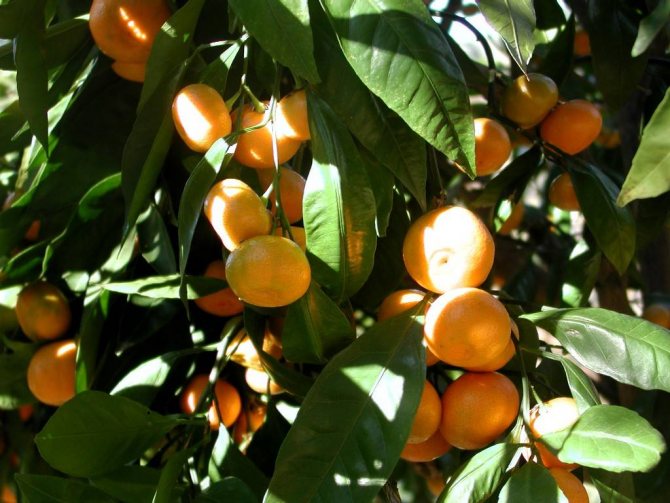

Photo Credit: Allen Timothy Chang
What kind of lighting should be for a mandarin?
Would you like to grow a beautiful indoor tangerine? Then the first thing you should do is to find a comfortable location for it and install good lighting. Direct sunlight is beneficial to him, but their amount should be moderate. If the lighting is poor, then the home tangerine outgrows, does not bloom, and it's not worth talking about the fruits. You need to put a pallet with a plant on the southeast and south sides of the apartment. In the summer, the tangerine is taken out to the loggia or balcony. In winter, the plant is placed in the most illuminated place with direct sunlight, but even in this situation, the plant needs additional lighting. You can opt for a phytolamp. The tangerine should be transferred to the option of additional lighting gradually, otherwise it can throw off the foliage from the "shock".


Formation
In nature, mandarin grows freely, but at home it should be formed. This is done not only for beauty, but also full fruiting. A neat tree is obtained by controlling the growth of shoots, they are periodically pinched at the level of 5-6 leaves. Strong, fatty, fast growing shoots can slow down bud formation and are also removed. Branches growing inside the tree are also removed.
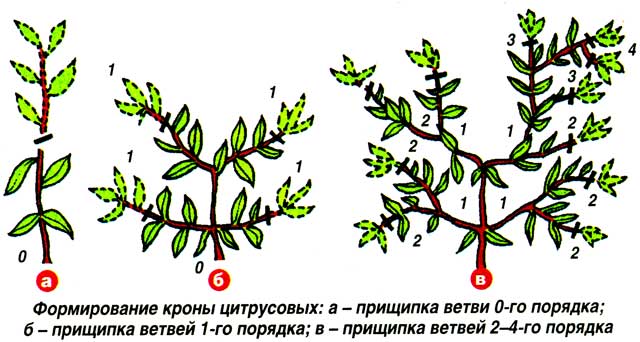

Difficulties in growing
Many flower growers, especially beginners, do not know how to care for tangerines at home, as a result of which it is not always possible to grow a strong, beautiful and fruitful tree.
The most common growing problems:
- Drying citrus. This phenomenon can be caused by two factors - too dry indoor air and lack of regular watering. The problem can be eliminated by increasing the humidity, the frequency of watering and irrigation of the tree crown.
- Improper transplantation can cause massive yellowing of foliage. This phenomenon is caused by rotting of the root collar buried in the ground. The second reason why tangerines turn yellow at home is if they are transplanted into too large a container. You can fix the problem by replanting the plant again in a suitable flowerpot and so that the root collar remains above ground level.
- Falling foliage. Slight shedding of foliage is a natural process that usually occurs during the autumn-winter period. Massive leaf fall can be caused by an excess of fertilizers, an invasion of parasites and diseases.Overfed specimens should be transplanted into new soil, sick ones should be treated with the necessary preparations.
- Withering of shoots and foliage. During cultivation and regular home maintenance, the mandarin can wilt. The most common reason is too much or too little moisture. Optimize watering and transplant overflowed specimens into new soil.
- Chlorosis of the leaves. This problem occurs when there is a lack of iron. The tree should be fed with a drug that contains this component.
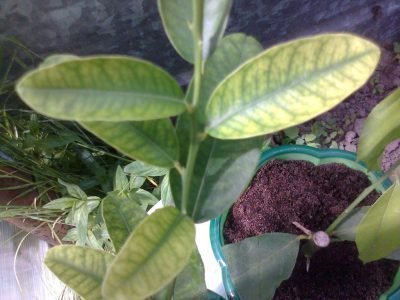

Chlorosis of citrus
Shiva Mikan
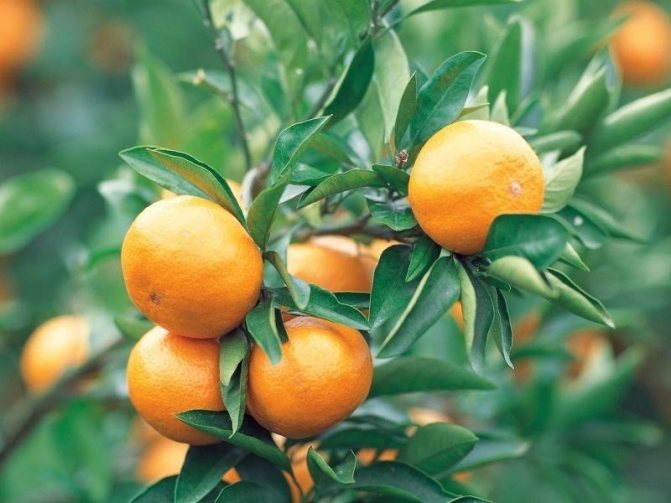

An early ripening variety with average yields. The tree is small, characterized by rapid development and growth of green mass. Tangerines grow small, weighing only up to 30 g, their taste is sweet and sour.
The variety is used for breeding and as an ornamental tree. The plant can withstand frosts in central Russia.

